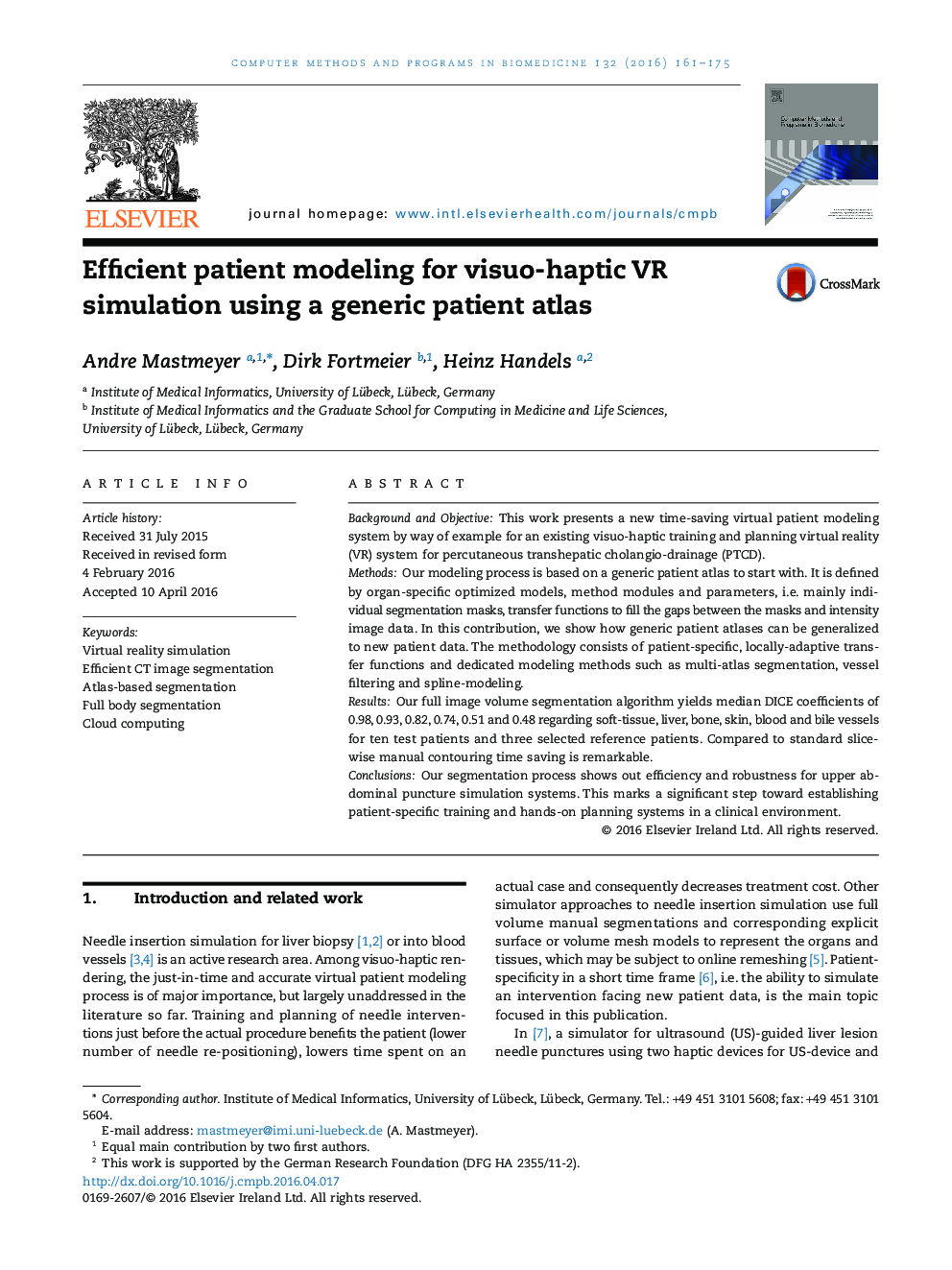| کد مقاله | کد نشریه | سال انتشار | مقاله انگلیسی | نسخه تمام متن |
|---|---|---|---|---|
| 468610 | 698241 | 2016 | 15 صفحه PDF | دانلود رایگان |
• Easily adaptable system concept for other fields of intervention.
• Whole body part segmentation, i.e. upper abdomen, of CT image data for liver punctures.
• Efficiently processable segmentation system pipeline.
• Thorough evaluation of segmentation results with 10 test patients.
Background and ObjectiveThis work presents a new time-saving virtual patient modeling system by way of example for an existing visuo-haptic training and planning virtual reality (VR) system for percutaneous transhepatic cholangio-drainage (PTCD).MethodsOur modeling process is based on a generic patient atlas to start with. It is defined by organ-specific optimized models, method modules and parameters, i.e. mainly individual segmentation masks, transfer functions to fill the gaps between the masks and intensity image data. In this contribution, we show how generic patient atlases can be generalized to new patient data. The methodology consists of patient-specific, locally-adaptive transfer functions and dedicated modeling methods such as multi-atlas segmentation, vessel filtering and spline-modeling.ResultsOur full image volume segmentation algorithm yields median DICE coefficients of 0.98, 0.93, 0.82, 0.74, 0.51 and 0.48 regarding soft-tissue, liver, bone, skin, blood and bile vessels for ten test patients and three selected reference patients. Compared to standard slice-wise manual contouring time saving is remarkable.ConclusionsOur segmentation process shows out efficiency and robustness for upper abdominal puncture simulation systems. This marks a significant step toward establishing patient-specific training and hands-on planning systems in a clinical environment.
Journal: Computer Methods and Programs in Biomedicine - Volume 132, August 2016, Pages 161–175
